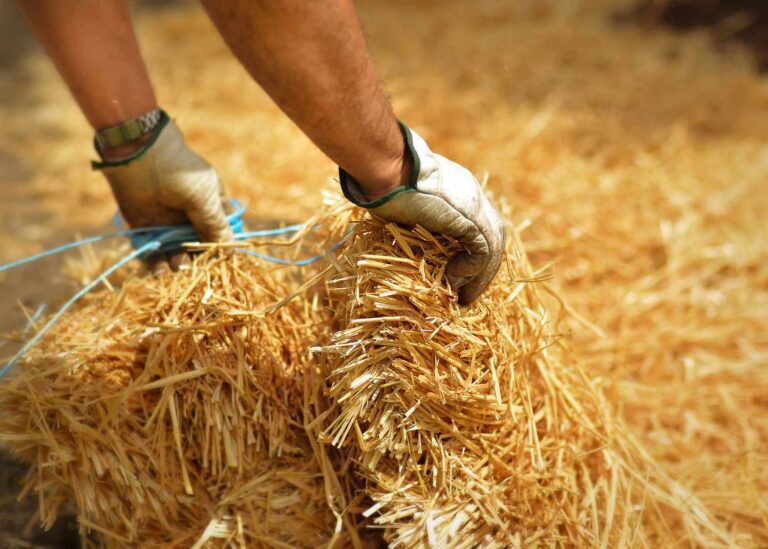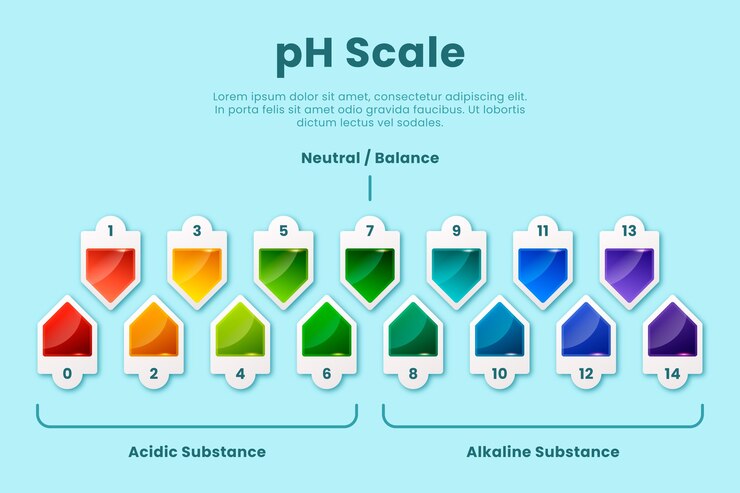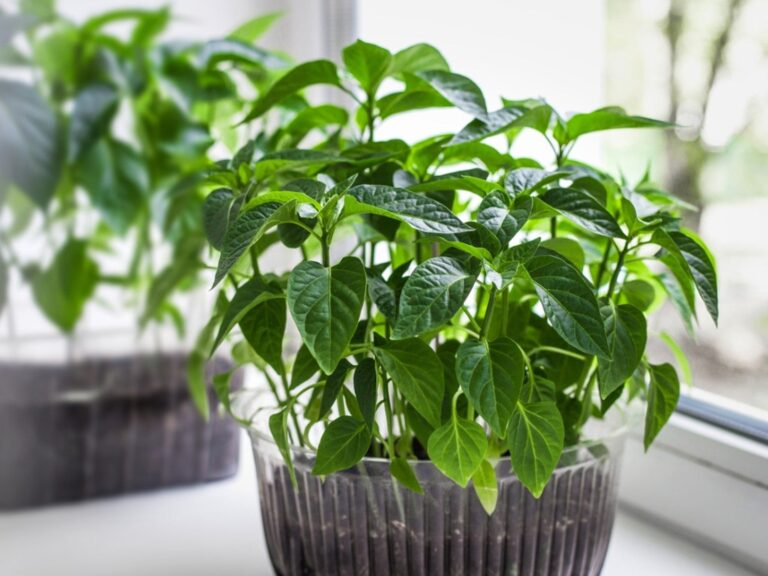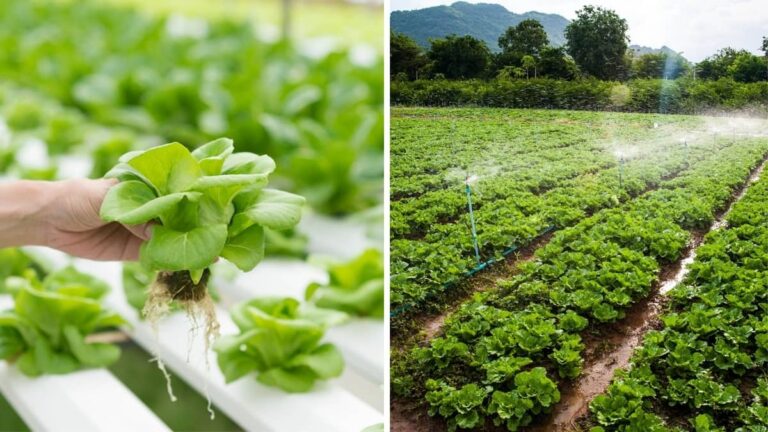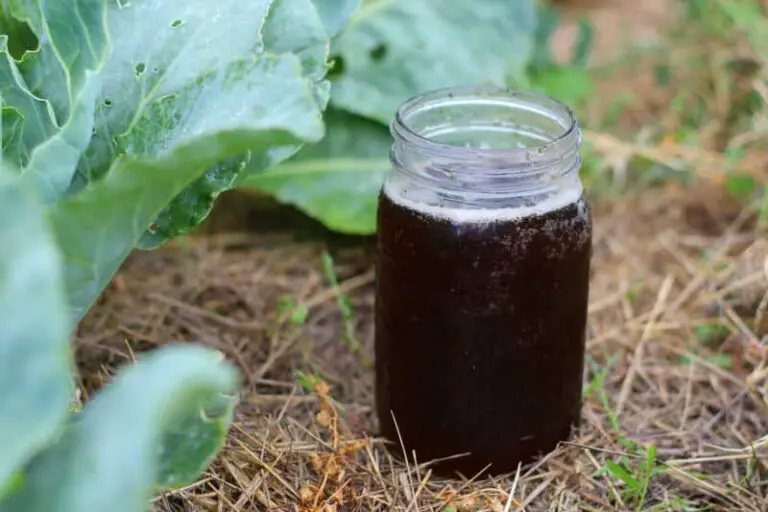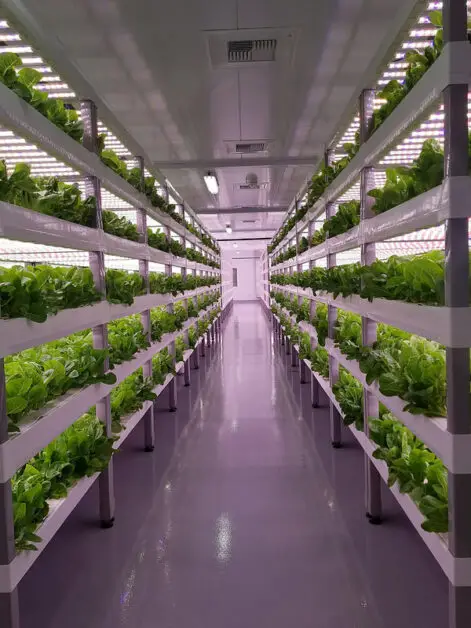The Best Potting Soil: Choose The Right Potting Mix
Table of Contents
The Importance of Quality Potting Soil for Successful Plant Growth
Quality potting soil is a vital component for achieving successful plant growth. The right soil provides the necessary nutrients, structure, and environment for plants to thrive and reach their full potential. Poor quality soil, on the other hand, can hinder root development, impede water drainage, and restrict nutrient absorption, leading to stunted growth and a weakened immune system.
One of the key benefits of using quality potting soil is its ability to provide a well-balanced blend of essential nutrients. Plants need a variety of minerals and trace elements for healthy growth, including nitrogen, phosphorus, potassium, calcium, and magnesium. A good potting soil will be enriched with these nutrients, ensuring that plants have access to everything they need to develop strong stems, vibrant leaves, and robust root systems. In addition, quality potting soil also contains organic matter, which improves soil structure, enhances water retention, and aids in nutrient availability. By providing a nutrient-rich environment, high-quality potting soil sets the stage for vigorous growth and abundant harvests.
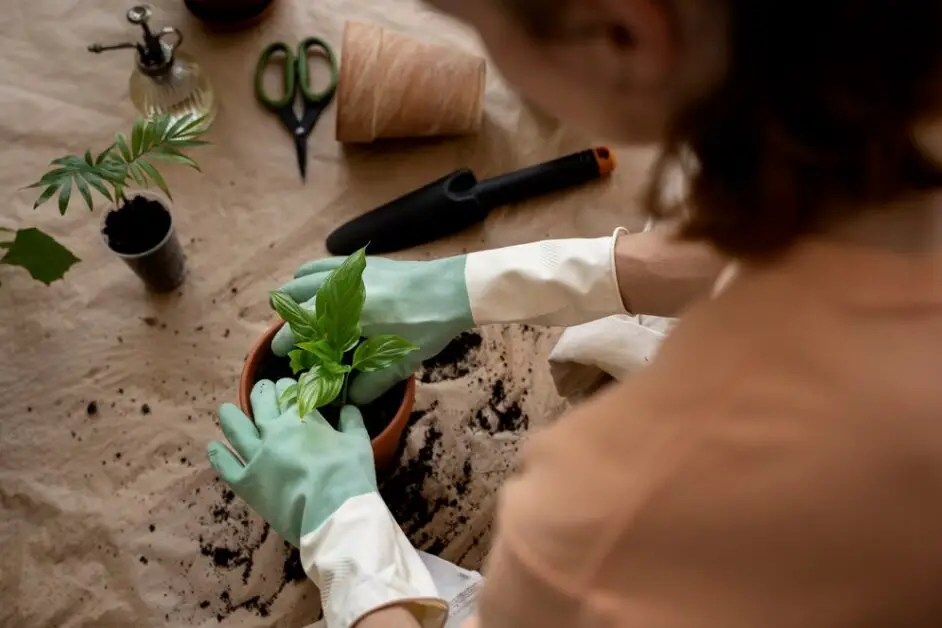
Understanding the Role of Potting Soil in Plant Health
Potting soil plays a crucial role in the overall health and well-being of plants. It provides a supportive environment for the root system and serves as a reservoir for essential nutrients and water. The quality and composition of the potting soil directly impact the growth, development, and productivity of plants.
One key aspect to consider when it comes to potting soil is its ability to retain moisture. Proper water retention is vital for plants, as it allows them to access the water they need for various physiological processes. A well-draining potting mix can prevent root rot and other water-related issues while providing a moist environment that supports healthy root growth.
Furthermore, potting soil acts as a nutrient bank for plants. It contains essential elements such as nitrogen, phosphorus, and potassium, which are vital for plant growth. The nutrient content of the potting soil can greatly influence the overall health and productivity of plants. Additionally, potting soil can be enriched with organic matter or fertilizers to provide additional nutrients for plants to thrive.
Certainly! Understanding the role of potting soil is essential for maintaining healthy plants. Let’s delve into the components and benefits of potting soil in a simple table:
| Component | Description |
|---|---|
| Peat Moss | – Mined organic material composed of partially decayed plant matter. – Provides bulk mass and helps retain moisture. – Slightly acidic, suitable for acid-loving plants (e.g., blueberries). – Consider sustainability and source from reputable providers. |
| Coconut Coir | – Made from shredded coconut skins. – Adds bulk to potting mixes. – Sustainable alternative to peat moss. – pH-neutral and suitable for various plants. – Transport considerations if not locally produced. |
| Perlite and Vermiculite | – Inorganic materials that improve aeration and drainage. – Perlite: Lightweight volcanic glass particles. – Vermiculite: Expands when wet, retaining water. – Balances soil structure. – Commonly used in potting mixes. |
| Composted Plant Matter | – Organic material that provides nutrients and improves soil structure. – Enhances microbial activity. – Supports plant growth. – Often derived from decomposed leaves, kitchen scraps, or other plant-based sources. |
| Composted Animal Waste | – Adds nutrients and organic matter. – Be cautious with sources to avoid pathogens. – Commonly used in commercial potting soils. – Supports microbial life and plant health. |
| Mineral Particles (Sand, Silt, Clay) | – Varying particle sizes affect soil texture. – Sand: Improves drainage. – Silt: Retains moisture. – Clay: Provides structure and nutrients. – Balanced proportions create optimal soil conditions. |
| Mined Natural Topsoil | – Contains minerals and organic matter. – Use sparingly due to potential weed seeds and pathogens. – Mix with other components for a well-rounded potting soil. – Test for quality and adjust as needed. |
Remember, a high-quality potting soil balances water retention, drainage, and nutrient availability. Choose wisely to nurture thriving plants!
Key Factors to Consider When Choosing Potting Soil
When it comes to choosing potting soil for your plants, there are several key factors to consider. One important factor is the drainage capability of the soil. Proper drainage is essential for the health of your plants as it prevents waterlogging and root rot. Look for potting soil that contains materials such as perlite or vermiculite, which help to improve drainage.
Another factor to consider is the nutrient content of the potting soil. Different plants have different nutrient requirements, so it’s important to choose a soil that meets the specific needs of your plants. Look for a potting soil that contains a balanced blend of essential nutrients like nitrogen, phosphorus, and potassium. Additionally, organic matter such as compost or peat moss can enhance the nutrient content of the soil and provide additional benefits for plant growth.
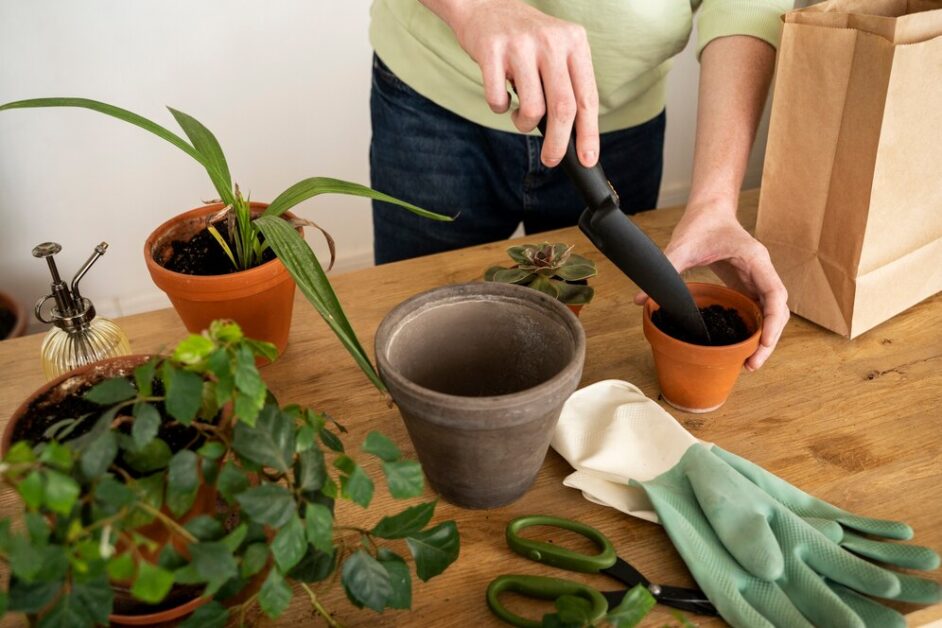
Different Types of Potting Soil and Their Characteristics
In addition to drainage and nutrient content, the pH level of the potting soil is also an important factor to consider. The pH level affects the availability of nutrients to plants, so it’s important to choose a soil with a pH level that is suitable for the plants you are growing. Most plants prefer a slightly acidic to neutral soil pH, around 6.0 to 7.0. Conduct a soil test or consult with a gardening expert to determine the pH requirements of your specific plants and choose a potting soil accordingly.
Overall, when choosing potting soil, it’s important to consider factors such as drainage, nutrient content, and pH level. By selecting a soil that meets the specific needs of your plants, you can provide them with the optimal growing environment for successful and healthy growth.
Potting soil is an essential component for successful plant growth, providing the necessary nutrients, moisture retention, and aeration for root development. There are different types of potting soil available in the market, each with its own unique characteristics that cater to specific plant needs.
One common type of potting soil is a peat-based mix, which is made primarily from decomposed sphagnum moss. Peat-based soil is well-known for its ability to retain moisture, making it a suitable choice for plants that require high levels of water, such as ferns and tropical plants. Additionally, peat-based soil has excellent drainage properties, preventing waterlogged conditions that can lead to root rot.
Another popular option is a compost-based potting soil, which is made from composted organic matter such as decomposed plant material, animal manure, and kitchen scraps. Compost-based soil is rich in nutrients and beneficial microorganisms, promoting healthy plant growth. It also has good moisture retention properties and helps in improving soil structure, making it ideal for a wide range of plants, including vegetables, herbs, and flowers.
In addition to peat and compost-based soils, there are also specialty potting soils available for specific plant types. For example, cacti and succulents thrive in well-draining soil with low organic matter content, replicating their natural arid habitat. Therefore, a sandy or gritty mix with added perlite or vermiculite is recommended to provide the necessary drainage for these plants.
When choosing the right potting soil for your plants, it is important to consider their specific requirements, such as moisture needs, nutrient preferences, and drainage requirements. By selecting the appropriate type of potting soil, you are providing your plants with the ideal environment for healthy growth and development.
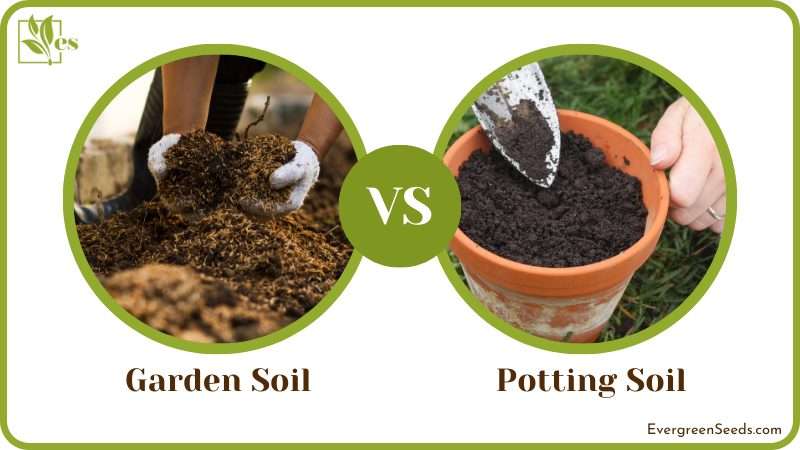
Examining the Nutrient Content of Potting Soil
Potting soil is a vital and often underestimated component in the successful growth of plants. One key aspect that gardeners and plant enthusiasts should consider when choosing potting soil is its nutrient content. Nutrients are essential for plants to thrive, and the right balance of nutrients in the potting soil can have a significant impact on the overall health and productivity of the plants.
Examining the nutrient content of potting soil involves understanding the three primary macronutrients: nitrogen (N), phosphorus (P), and potassium (K), commonly referred to as NPK. These macronutrients play critical roles in different aspects of plant growth. Nitrogen is responsible for leaf and stem development, phosphorus aids in root establishment and flower production, while potassium promotes overall plant health and resilience. In addition to these macronutrients, other essential elements include calcium, magnesium, sulfur, and a range of micronutrients like iron, manganese, and zinc.
The nutrient content of potting soil can vary depending on the specific needs of different plants. It is important to choose potting soil that aligns with the nutritional requirements of the plants you intend to grow. By examining the nutrient content of the potting soil and ensuring it meets the specific needs of your plants, you can provide them with the necessary elements for healthy growth and robust yields.
The Role of Organic Matter in Potting Soil
Organic matter plays a vital role in the overall health and quality of potting soil. It provides essential nutrients, improves soil structure, and enhances water retention capabilities. This composition, consisting of decayed plant material, animal waste, and microorganisms, is rich in organic carbon and serves as a valuable source of energy for beneficial soil microbes.
One of the key benefits of organic matter is its capacity to improve soil fertility. It acts as a reservoir for essential nutrients like nitrogen, phosphorus, and potassium, making them readily available to plants. The decomposition process breaks down organic matter into forms that can be absorbed by plant roots, promoting healthy growth, and development. Additionally, the presence of organic matter encourages the proliferation of beneficial microorganisms, such as bacteria and fungi, which contribute to nutrient cycling and plant nutrient uptake.
Furthermore, organic matter plays a crucial role in enhancing soil structure and texture. It helps to create a well-draining yet moisture-retentive environment by improving soil aggregation. This allows water to penetrate the soil easily, preventing waterlogging and ensuring adequate aeration for root development. The improved soil structure also promotes root penetration and exploration, leading to stronger and more vigorous plant growth.
In conclusion, incorporating organic matter into potting soil is essential for maximizing plant health and growth. Its nutrient-rich composition, ability to enhance soil structure, and promotion of beneficial soil microorganisms make it a vital component for gardeners and plant enthusiasts. By understanding the role of organic matter in potting soil, you can make informed decisions when selecting or creating your own potting soil for optimal plant performance.
• Organic matter provides essential nutrients like nitrogen, phosphorus, and potassium to plants
• Decomposition process breaks down organic matter into forms that can be absorbed by plant roots
• Presence of organic matter encourages the proliferation of beneficial microorganisms
• Organic matter improves soil structure and texture
• It helps create a well-draining yet moisture-retentive environment
• Improved soil structure promotes root penetration and exploration for stronger plant growth
Understanding pH Levels in Potting Soil
Maintaining the proper pH levels in potting soil is crucial for the overall health and successful growth of your plants. pH, which stands for “potential of hydrogen,” measures the acidity or alkalinity of the soil on a scale ranging from 0 to 14. A pH level of 7 is considered neutral, values below 7 indicate acidic soil, while values above 7 indicate alkaline soil.
Different plants thrive in different pH conditions, with some preferring acidic soil, while others thrive in alkaline soil. Understanding the pH requirements of your plants is essential for ensuring optimal growth and maximizing their nutrient uptake.
To determine the pH level of your potting soil, you can use a pH testing kit available at most garden centers. Once you have measured the pH, you can then make the necessary adjustments to bring it to the desired level for your specific plants.
It is important to note that pH is not the only factor that influences plant growth. Other factors such as nutrient availability, soil structure, and drainage also play a significant role. Therefore, it is important to consider these factors in conjunction with pH when choosing or amending your potting soil. By maintaining the appropriate pH levels, you can create an environment that promotes healthy root development and nutrient absorption, ultimately leading to vigorous and thriving plants.
In the next section, we will explore the process of choosing the right potting soil for specific plant types. We will delve into the different characteristics and components of potting soil that contribute to its overall quality and efficacy.
Choosing the Right Potting Soil for Specific Plant Types
Choosing the right potting soil for specific plant types is crucial for ensuring their optimal growth and health. Different plants have varying needs when it comes to soil composition, drainage, and nutrient content. Understanding these requirements is key to creating an environment that supports their growth.
One important factor to consider when selecting potting soil is the specific nutritional needs of the plant. Some plants require high levels of certain nutrients, while others may prefer a more balanced approach. When choosing potting soil, it is essential to check the nutrient content and make sure it aligns with the plant’s requirements. This information is typically provided on the packaging or can be found through reputable sources.
Furthermore, the texture and structure of the potting soil should be taken into account. Some plants thrive in well-draining soil, while others perform better in soil with a higher water retention capacity. Examining the soil’s texture can give you a clue about its drainage capabilities. Sandy soil tends to drain quickly, while clay soil retains water for longer periods. Matching the soil type to the plant’s preferences can significantly impact its overall health and growth.
In conclusion, selecting the appropriate potting soil for specific plant types is a critical aspect of successful gardening. Considering the nutritional needs and drainage preferences of plants can help create an optimal environment for their growth. By carefully choosing the right potting soil, gardeners can set their plants up for success and enjoy vibrant and thriving gardens.
The Benefits of Using a Pre-Mixed Potting Soil
Pre-mixed potting soil offers a multitude of benefits for gardeners and plant enthusiasts. One of the main advantages is its convenience. With pre-mixed potting soil, you do not have to worry about gathering various ingredients and blending them in the correct proportions. It saves you time and effort, allowing you to focus on other aspects of your gardening tasks.
Another benefit of using pre-mixed potting soil is the consistency it provides. A high-quality pre-mixed potting soil is formulated to have a balanced blend of organic matter, nutrients, and minerals, ensuring optimal plant growth and health. This consistency in composition results in a reliable and predictable growing medium that can support the needs of a wide range of plant species. Whether you are growing vegetables, herbs, flowers, or houseplants, a pre-mixed potting soil can provide the necessary foundation for successful cultivation.
How to Make Your Own Potting Soil at Home
Making your own potting soil at home can be a rewarding and cost-effective way to ensure the health and vitality of your plants. By creating a customized blend, you can tailor the soil to meet the specific needs of your plants and provide them with everything they require for optimal growth. Here are some simple guidelines to follow when making your own potting soil.
First and foremost, it’s important to start with a base ingredient such as peat moss or coconut coir. These materials help to retain moisture and provide a lightweight structure for the soil. Next, add a suitable organic matter such as compost or vermicompost to enhance the nutrient content and improve the soil’s fertility. This organic matter will enrich the soil with essential nutrients that plants need for healthy growth. Finally, consider incorporating other additives such as perlite or sand to improve drainage and aeration in the soil. These additions will help prevent waterlogging and allow the roots to access oxygen more readily.
With these basic steps in mind, you can experiment with different ratios and ingredients to create a potting soil mix that works best for your specific plant types and growing conditions. Remember to keep track of the ingredients you use and their quantities, as this will allow you to fine-tune your mix in the future. By making your own potting soil, you can take control of the quality and composition, ensuring the best possible environment for your plants to thrive.
The Role of Drainage in Potting Soil
Proper drainage is a crucial aspect of potting soil that can significantly impact the health and growth of your plants. When it comes to potted plants, the role of drainage cannot be underestimated. Without adequate drainage, excessive water can accumulate in the potting soil, leading to waterlogged roots and ultimately causing root rot. On the other hand, insufficient moisture drainage can result in drought-like conditions for the plants, leading to wilting and even death.
To ensure effective drainage in your potting soil, there are a few key factors to consider. First and foremost, the pot itself should have drainage holes at the bottom to allow excess water to escape. This prevents the water from accumulating and allows air to circulate through the soil. Additionally, the type of potting soil you choose plays a crucial role in drainage. Well-draining soil typically consists of a mixture of materials such as peat moss, perlite, or vermiculite, which help create pore spaces for water to flow through. By providing a balance between water retention and drainage, your potting soil can contribute to healthier and thriving plants.
In the next section, we will delve deeper into the texture and structure of potting soil and how it can influence drainage. We will also explore various techniques to improve drainage in your potting soil for optimal plant growth and health.
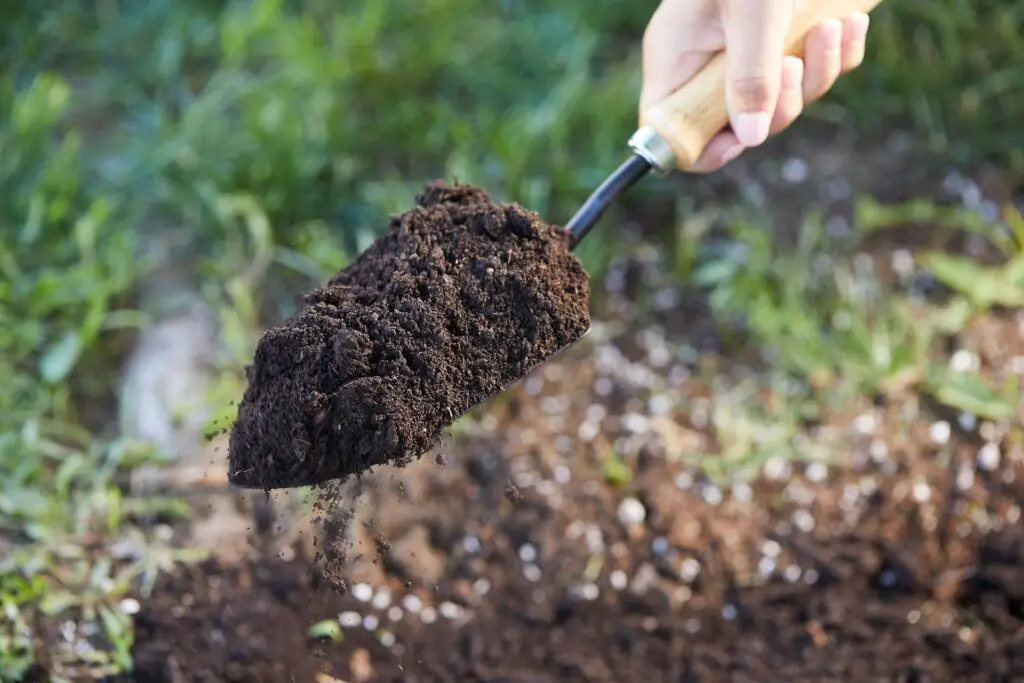
Examining the Texture and Structure of Potting Soil
Potting soil texture and structure play a crucial role in the overall health and success of your plants. When examining potting soil, two important factors to consider are its texture and structure.
Texture refers to the size of the soil particles and how they fit together. The texture of potting soil can range from sandy to clayey, with various combinations in between. Sandy soils have larger particles, which allow for good drainage but may not retain water and nutrients as effectively. Clayey soils, on the other hand, have smaller particles that retain water well but may become compacted and hinder root growth.
Structure, on the other hand, refers to how the soil particles arrange themselves. A healthy potting soil should have a well-developed structure, which allows for good aeration and root penetration. Soil structure is influenced by factors such as organic matter content, microbial activity, and mechanical disturbances. When potting soil has a good structure, it creates favorable conditions for roots to grow and plants to thrive.
In summary, examining the texture and structure of potting soil is vital for successful plant growth. Understanding the characteristics of different soil textures and the importance of a good soil structure will help you choose the right potting soil for your plants and create an optimal growing environment.
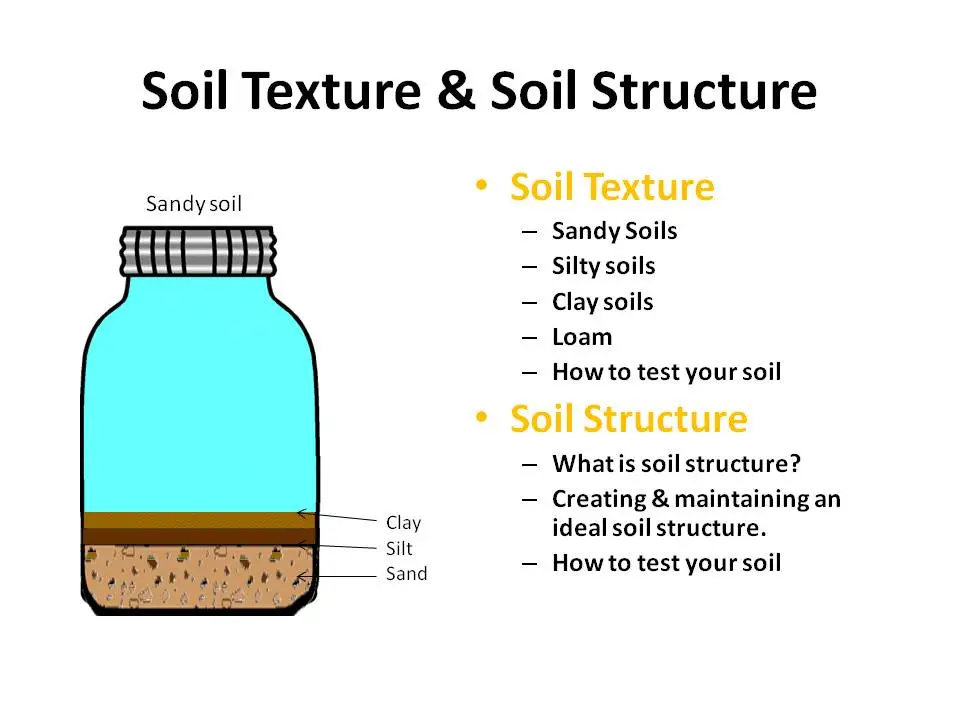
Understanding the Importance of Aeration in Potting Soil
Aeration is a crucial factor to consider when it comes to potting soil, as it plays a significant role in supporting plant growth and overall plant health. Proper aeration allows for the exchange of gases, including the absorption of oxygen and the release of carbon dioxide. This exchange is essential for root respiration and the efficient uptake of nutrients by the plants.
Inadequate aeration can lead to several problems. One common issue is the accumulation of excess moisture, which can create a damp and oxygen-deprived environment. This can lead to root rot, a condition that damages the plant’s root system and hinders its ability to absorb essential nutrients. Additionally, poor aeration can result in compacted soil, making it difficult for roots to penetrate and spread. Sufficient aeration, on the other hand, promotes the healthy development of roots, ensuring optimal nutrient uptake, water absorption, and overall plant vigor.
Tips for Properly Watering Plants in Potting Soil
Properly watering plants in potting soil is a crucial component of successful plant care. Many plant enthusiasts struggle with finding the right balance when it comes to watering their plants, often leading to the demise of their beloved greenery. To avoid this unfortunate outcome, here are some tips to ensure you are watering your plants in potting soil effectively.
First and foremost, it’s essential to understand that different plants have varying water requirements. Some plants prefer a drier environment, while others thrive in moisture-rich conditions. Therefore, it’s crucial to research and understand the specific watering needs of the plants in your care. This knowledge will help you determine the appropriate frequency and amount of water to provide. Additionally, always check the moisture level of the soil before deciding to water. Insert a finger about one inch into the soil; if it feels dry, it’s time to water, but if it’s still moist, hold off for a little longer. By gauging the soil’s moisture content, you can prevent overwatering or underwatering, both of which can harm your plants.
The Role of Fertilizers and Amendments in Potting Soil
Fertilizers and amendments play a crucial role in the success of potting soil and the overall health of plants. By providing essential nutrients and improving the soil’s structure, these additives can greatly enhance plant growth and development.
One important aspect to consider when selecting fertilizers and amendments for potting soil is the nutrient content. Different plants have varying nutritional requirements, so it is essential to choose products that align with the specific needs of your plants. Nitrogen, phosphorus, and potassium are the primary macronutrients that plants need in larger quantities, while micronutrients like iron, zinc, and manganese are required in smaller amounts. It is important to carefully read the labels of fertilizers and amendments to ensure they contain the necessary nutrients in the proper proportions.
Another factor to consider is the source and quality of the fertilizers and amendments. Organic amendments, such as compost or aged manure, can improve soil structure, moisture retention, and nutrient availability. They release nutrients slowly over time, providing a more sustainable and long-lasting source of nourishment for plants. Inorganic fertilizers, on the other hand, can provide readily available nutrients for immediate use by plants. The choice between organic and inorganic amendments depends on factors such as the type of plants being grown, the soil composition, and personal preferences.
When it comes to the application of fertilizers and amendments, proper timing and dosage are crucial. Over-application can lead to nutrient imbalances or even harm plant roots, while under-application may result in nutrient deficiencies. Following the recommended instructions on product labels and considering the specific needs of your plants can help ensure optimal results. Additionally, periodic soil testing can provide valuable insights into the nutrient levels present in the soil, helping you adjust fertilizer and amendment applications accordingly.
In conclusion, fertilizers and amendments play a vital role in potting soil by supplying plants with essential nutrients and improving soil structure. By selecting the right products, considering nutrient content, source and quality, and applying them appropriately, gardeners can provide their plants with the necessary nourishment for healthy growth and productivity.
Certainly! Let’s explore the role of fertilizers and amendments in potting soil through a helpful table:
| Component | Role in Potting Soil |
|---|---|
| Fertilizers | – Nutrient Supply: Fertilizers directly provide essential nutrients (nitrogen, phosphorus, potassium, etc.) to plants. – Targeted Nutrition: Customized formulas address specific plant needs (e.g., flowering, root development). – Immediate Availability: Nutrients are readily accessible for plant uptake. – Various Formats: Available as granules, liquids, spikes, or slow-release formulations. |
| Soil Amendments | – Texture Improvement: Soil amendments enhance soil structure and texture. – Air and Water Pockets: They create spaces for roots to access air and water. – Root Development: Deeper, stronger roots result from improved soil conditions. – Examples: Amendments include bone meal, blood meal, peat moss, compost, and lime. – Secondary Nutrients: Some amendments also provide trace nutrients. |
Remember that a balanced combination of both fertilizers and soil amendments ensures healthy plant growth. Customize your potting soil based on your specific plants’ requirements.
Common Mistakes to Avoid When Using Potting Soil for Indoor Plants
When it comes to using potting soil for indoor plants, there are a few common mistakes that many gardening enthusiasts make. One of the biggest mistakes is using the wrong type of potting soil for the specific plants they are growing. Different plants have different needs when it comes to soil composition, drainage, and nutrient content. It’s important to research and understand the requirements of your specific plants before selecting a potting soil.
Another common mistake is overwatering the plants. While it’s true that plants need water to survive, too much water can actually be harmful to them. Overwatering can lead to root rot and other fungal diseases. It’s important to understand the moisture needs of your plants and water them accordingly. Checking the moisture level of the soil before watering and providing proper drainage can help avoid this mistake.
For more information watch the below video.
What is the importance of using quality potting soil for indoor plants?
Using quality potting soil is important for successful plant growth because it provides the necessary nutrients, proper drainage, aeration, and pH balance for the plants.
How does potting soil affect plant health?
Potting soil plays a crucial role in plant health as it provides the necessary nutrients, moisture retention, and aeration for root development and overall plant growth.
What factors should I consider when choosing potting soil for my indoor plants?
When choosing potting soil, consider its nutrient content, organic matter composition, pH levels, and how well it retains moisture. These factors will ensure the ideal growing environment for your indoor plants.
What are the different types of potting soil and their characteristics?
Common types of potting soil include peat-based, coconut coir-based, and soilless mixes. Each type has its own characteristics, such as water retention, aeration, and nutrient content.
How can I examine the nutrient content of potting soil?
You can examine the nutrient content of potting soil by checking the label or package, which should provide information on the essential nutrients present in the soil mix.
What role does organic matter play in potting soil?
Organic matter in potting soil improves its structure, water-holding capacity, and nutrient retention. It also promotes beneficial microbial activity in the soil.
Why is understanding pH levels important when using potting soil?
pH levels in potting soil can greatly impact plant health and nutrient availability. Different plants thrive in different pH ranges, so it’s important to choose a potting soil with the appropriate pH for your specific plants.
How do I choose the right potting soil for specific plant types?
To choose the right potting soil for specific plant types, consider their moisture requirements, nutrient needs, and pH preferences. Research the specific requirements of your plants and select a potting soil accordingly.
What are the benefits of using a pre-mixed potting soil?
Pre-mixed potting soil ensures a balanced blend of nutrients, organic matter, and components for proper drainage and aeration. It saves time and effort in the process of preparing potting soil.
Can I make my own potting soil at home?
Yes, you can make your own potting soil at home by combining ingredients like peat moss or coconut coir, perlite or vermiculite, and compost or organic matter. However, it’s important to ensure proper proportions and nutrient balance.
Why is drainage important in potting soil?
Proper drainage in potting soil prevents waterlogging, which can lead to root rot and other fungal diseases. It allows excess water to escape and ensures that the roots receive enough oxygen.
How can I examine the texture and structure of potting soil?
To examine the texture and structure of potting soil, you can feel it with your hands or squeeze a handful to check its moisture content. It should feel crumbly and loose, allowing for proper root development.
What is the role of aeration in potting soil?
Aeration in potting soil allows oxygen to reach the roots, promotes beneficial microbial activity, and prevents the soil from compacting. It is essential for healthy root growth.
What are some tips for properly watering plants in potting soil?
When watering plants in potting soil, ensure that the soil is thoroughly moistened but not waterlogged. Water at the base of the plant, avoiding wetting the foliage, and allow the soil to partially dry out between waterings.
How do fertilizers and amendments play a role in potting soil?
Fertilizers and amendments provide essential nutrients to the plants in potting soil, promoting healthy growth and preventing nutrient deficiencies. They can be added to the soil mix or applied as needed.
What are common mistakes to avoid when using potting soil for indoor plants?
Common mistakes to avoid when using potting soil for indoor plants include overwatering, using the wrong type of soil for specific plants, not providing adequate drainage, and neglecting to regularly check the pH and nutrient levels of the soil.

Nicole Burke is a dynamic writer at SouthElMonteHydroponics, fueled by her passion for horticulture and environmental sustainability. Armed with a degree in Environmental Science from a renowned institution, Nicole’s expertise lies in hydroponic gardening, organic farming, and biodiversity conservation. Her insatiable curiosity and love for nature drive her to explore innovative techniques in hydroponics, seeking to revolutionize the way we grow crops in urban environments. Nicole’s writing reflects her deep commitment to promoting eco-conscious practices and fostering a deeper connection between humans and the natural world. Through her engaging storytelling, she inspires others to embrace sustainable living and harness the power of hydroponics for a greener future.

